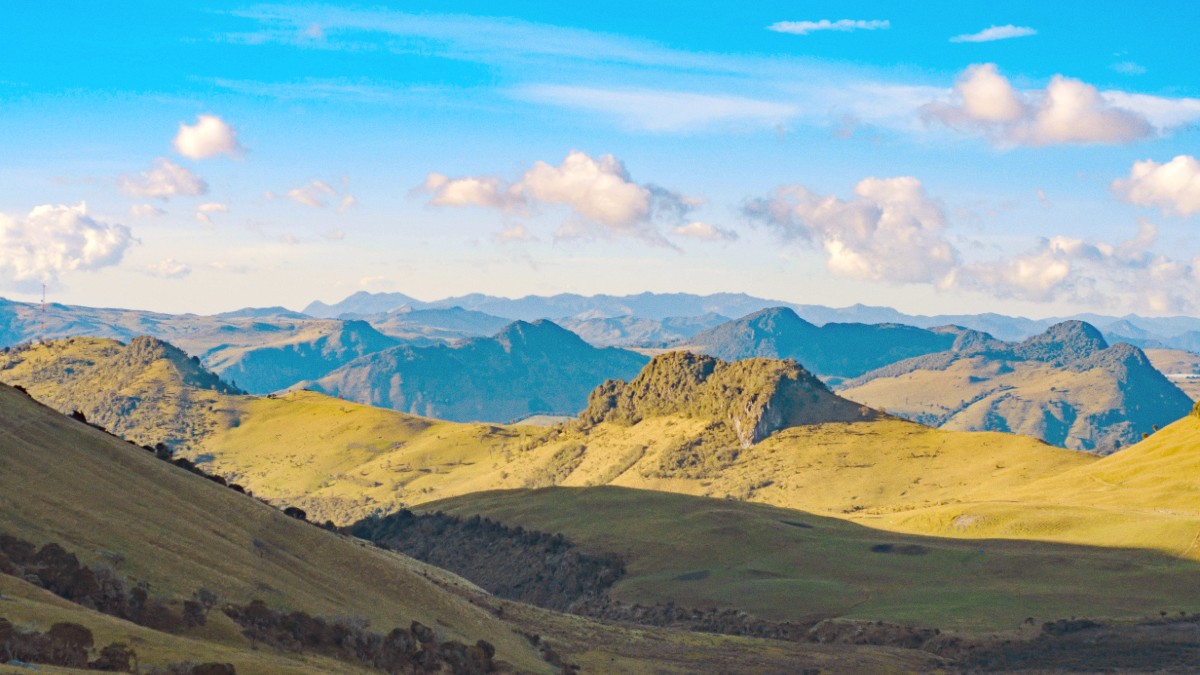
Colombia
High Season (December to January, June to July): December to January sees a large influx of visitors due to Christmas, New Year celebrations, and the renowned Feria de Manizales, which happens in January. June to July months align with Colombian school holidays, leading to increased domestic tourism.
Shoulder Season (March and September) Fewer crowds yield a more relaxed experience. The weather is moderate, often a transition between dry and rainy periods, yielding a mix of sunshine and occasional showers. Better prices for flights and accommodation often found during these months.
Low Season (April to May, October to November) These periods are the rainy seasons. The lowest prices for flights and accommodation are present. Fewer tourists mean a more intimate experience with local life.
Manizales experiences no hurricanes. Its inland, mountainous location protects it from tropical storms.
While not extremely high, some visitors from sea level may experience mild altitude sickness symptoms like headaches or dizziness for the first day or two. The region is seismically active, so minor tremors can occur. Nevado del Ruiz volcano, located nearby, constant monitoring by geological services, and safety protocols stand in place for local communities.
January
City buzzes with activity, cultural events.
Higher accommodation prices, crowded attractions.
Year-Round
Comfortable conditions for farm walks.
Muddier trails during rainy seasons.
Drier Periods
Clear views, less muddy trails, better visibility.
Limited outdoor activities during heavy rain.
Fewer crowds, moderate weather, better prices for flights and lodging. Mix of sunshine and occasional showers.
Lowest prices for flights and accommodation. More intimate experience with local life. Showers often intermittent.
Mild altitude sickness like headaches/dizziness may occur. Stay hydrated, take it easy.
Minor tremors can occur. Nevado del Ruiz monitored; safety protocols for communities.
A Light rain jacket a smart item.
Weather less predictable in shoulder seasons. Prepare for both sun and rain.
June-July align with Colombian school holidays; increased domestic tourism.
Rules vary based on your nationality.
Many nationalities can enter Colombia visa-free for tourism. This includes citizens of the United States, Canada, European Union countries, the United Kingdom, Australia, and New Zealand. You typically stay for an initial period of up to 90 days. This period often extends for another 90 days, but your total stay cannot exceed 180 days within a calendar year.
No general entry fees apply for standard tourist visas or visa-exempt entries into Colombia. Upon arrival, visitors usually complete an immigration form. Sometimes this form is digital, using the Check-Mig system, which travelers complete before departure to Colombia. Present your passport to an immigration officer. They place a stamp in your passport indicating the authorized length of your stay.
Daily costs vary based on travel style.
General information on health and safety.
Manizales itself low risk due to altitude.
Measles-Mumps-Rubella (MMR), Polio, Rabies (high-risk activities/rural).
4-6 weeks before trip for personalized advice.
Common Health Concerns
Traveler's Diarrhea: Drink bottled or purified water. Avoid unpeeled raw fruits and vegetables. Food well-cooked and served hot. Carry Anti-diarrhea medication.
Altitude Sickness: Manizales stands at a moderate altitude. Take it easy your first day. Stay hydrated by drinking plenty of water. Avoid alcohol and heavy meals upon arrival. If symptoms worsen, consult a doctor. Symptoms: headache, dizziness, nausea, shortness of breath.
Sunburn: Sun's rays stronger at altitude. Use High SPF sunscreen, wear a Wide-brimmed hat, and Sunglasses.
Pickpocketing/bag snatching can occur in crowded areas (city center, bus terminal, festivals).
El Centro can be quiet/require caution at night. Palermo/Cable Plaza generally safe.
Avoid walking alone in unfamiliar/poorly lit areas at night. Do not display large amounts of cash or electronics. Be wary of scams. Use licensed taxis/ride-sharing after dark.
Region prone to seismic activity. Nevado del Ruiz volcano active, constantly monitored.
Travel insurance highly recommended for all visitors to Colombia.
Medical emergencies, hospitalization, emergency medical evacuation, trip cancellation/interruption, lost/stolen luggage.
National Emergency Line: 123 (unified police, ambulance, fire); Police: 112; Firefighters: 119; Ambulance: 125.
Keep contact info for your country's embassy/consulate in Bogotá; they assist in emergencies like lost passports.